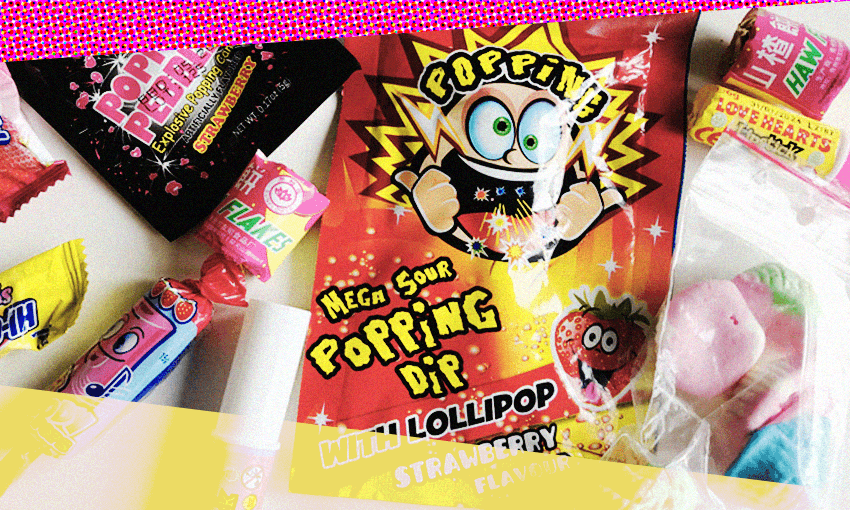The world of lollies is weird and full of surprises – and that’s why Charlotte Muru-Lanning can’t stop buying them.
This is an excerpt from our weekly food newsletter, The Boil Up.
Out of necessity, the last month or so of this newsletter has been relatively heavy. There have been stories on national identity, history, class, colonisation, poverty and all the ways those strands are linked together and underpinned by the food we eat. Food is enduringly political, of course, but it’s important we remind ourselves it can also just be about plain and simple enjoyment. It can be entirely stupid – irrational even. Enter: my love affair with lollies.
Reflecting on the extensive number of times I’ve written about puddings, cakes, pancakes, chocolate bars and ice cream, you’d be forgiven for assuming I had a sweet tooth. The thing is, I absolutely don’t. In fact, after dinner you’re more likely to find me with what is essentially a second dinner: some combination of cheese, or olives, leftover rice, salt and vinegar chips or instant noodles.
But ever so occasionally I find myself splurging on a selection of lollies. Most regularly, this takes place at one of the two lolly shops in St Lukes mall, where I select the most unfamiliar, outlandish or aesthetically pleasing sweets I can find. Other times I’ll branch out and indulge in a selection only to be found on the World Wide Web. Over the weekend I ordered a package filled mostly with Mexican candy, known for its unique flavour profiles: heavy on the salty, spicy and sour, and light on sweetness. This haul included a lollipop dusted with lemon and salt powder; watermelon and chilli hard candy; a pineapple and chilli lollipop in the shape of a roast chicken, and more.
I’m not the only one who’s obsessed with curious candy either, apparently. Intriguing candy has taken off on TikTok, and it’s led me down a rabbit hole of people trying lollies from far-flung locations.
I’ve accumulated a fairly sizeable collection of lollies at this point and yet why exactly remains a mystery to me. Sure, I always try one or two, but thanks to my preference for savoury, they mostly end up shared with someone else straight from the packet or added to the ever-evolving lolly jar for sweet-toothed guests. Perhaps the ability to share an edible novelty with those I care about is the real thrill. Or maybe the thrill of plonking a pile of lollies on the shop counter and swiping my Eftpos card is about nothing more than that well-conditioned impulse to consume.
I wonder whether my own disinterest in sweets is what enhances their fascination for me. We don’t technically need to eat sweet things and yet people are especially dedicated to making them beautiful, fanciful or cute, whether they be delicately iced cakes or, in the case of lollies, novel concepts like Melody Pops, which make a haunting whistling sound as you suck, or Love Hearts candy lipstick (self-explanatory). Their very nature of being unnecessary and silly makes them a delight. In the land of sweets, it’s all about fun.
If there’s any deep reason why I’m so into lollies it could be that they are a fairly accessible window into various cultures, and an especially easy starting point when it comes to understanding the flavours that make certain food cultures so distinctive. Take Japanese candy, for example. The form might be familiar enough globally – gummies, boiled sweets or chocolate bars – but their flavours – matcha, cherry blossom, peach, yuzu and beyond – are revealing of preferences much more specific to place.
I might not be working as a stylist at Vogue and prancing around New York City in knee-high Chanel boots, as a school-aged me once envisaged. But I am on occasion buying $15 worth of popping candy, chilli-flavoured gummies and sour straps from the lolly shop my mum used to walk me straight past after school. And I’m doing it in the name of work. When you look at it like that, I’m living my wildest dreams.



